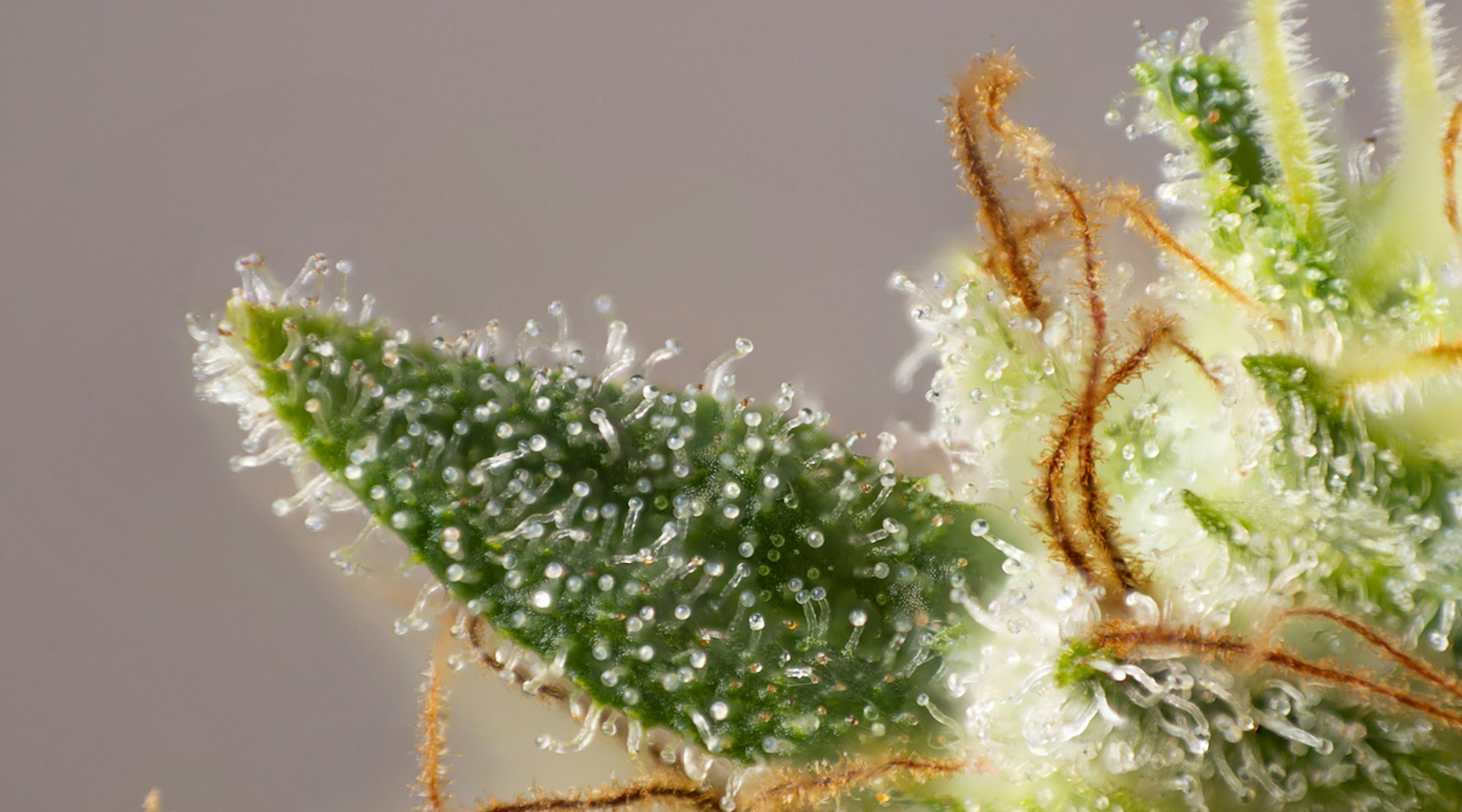Linalool in medical cannabis: Therapeutic potential and health benefits
8 min read
Sam North
As global policies shift, the ever-increasing body of research into the therapeutic possibilities of medical cannabis has led to a deeper understanding of the complex chemical makeup of this plant.
While cannabinoids (THC and CBD) remain the "main players" in the medicinal properties of cannabis, the emerging evidence is showing that terpenes - the aromatic compounds responsible for the distinct smell of different cultivars - also play a crucial role in its clinical efficacy.
Contents
Cannabis sativa L. cultivars have been shown to produce up to four hundred different terpenes, but most of these come in exceedingly small concentrations. That said, there are a range of terpenes that come in much higher levels, and this includes today's hero - linalool.
What is linalool?
Whether you realise it or not, you actually already know linalool.
Terpenes are the organic compounds that offer up all the lovely aromas we associate with nature, and linalool is one of the most common. It's not just cannabis plants that produce terpenes. They are widespread throughout the plant kingdom, and you'll find linalool in a bunch of well-loved greenery.
Along with cannabis plants, linalool is produced in high concentrations in lavender, mint, sweet basil, cinnamon, rosewood, and coriander - to name just a few. It has a distinct floral scent that is most often described as delicate, sweet, and citrusy - with a hint of spice. It's soothing and calming, with a subtly sedative effect - which is why it has been used for centuries in aromatherapy.
What are the potential therapeutic benefits of linalool?
At this point, it is important to note that research into the therapeutic applications of linalool is ongoing, but the results so far are very promising. Linalool has been shown to have a wide range of potential health benefits, including anti-inflammatory, pain-relieving, and antibacterial properties, to name just a few.
What does the current research into linalool terpene effects show?
Thanks to the abundance of linalool throughout the natural world, it has been extensively studied.
Linalool has demonstrated potential in:
- Stress reduction through its calming effects
- Acting as an antidepressant by increasing dopamine levels in the brain
- Reducing inflammation and pain through its anti-inflammatory properties
- Offering antibacterial activity against various strains of bacteria, including MRSA and E. coli
- Protecting against skin damage caused by UV radiation
- Acting as an anticonvulsant in the treatment of epilepsy
- Reducing cancer tumour growth and metastasis through its anti-inflammatory and antioxidant properties
- Improving sleep quality
As research continues, we expect to see increased applications for linalool in the treatment of various health issues.
How does linalool affect the clinical efficacy of medical cannabis?
Before we dive into the specifics of linalool, let's take a quick look at how terpenes, in general, affect the therapeutic potential of medical cannabis.
Terpenes may act synergistically with cannabinoids to enhance their effects, and some studies suggest that certain combinations can produce enhanced therapeutic effects compared to using cannabinoids alone. This is known as the "entourage effect".
The entourage effect explained
This widely accepted theory first emerged in 1998. Professors Raphael Mechoulam and Shimon Ben-Shabat from the Hebrew University in Jerusalem suggested that cannabinoids and terpenes work together to enhance the medicinal properties of cannabis.
This theory has been supported by various studies, including a 2011 study published in the British Journal of Pharmacology, which showed that combining THC with other cannabinoids and terpenoids resulted in more significant pain relief than using THC alone.
Essentially, the theory posits that combining phytocannabinoids (THC, CBD, CBN, etc.) and terpenes (linalool, limonene, myrcene, humulene, beta-caryophyllene) may offer enhanced therapeutic benefits. However, this is still just a theory, and more research is needed to confirm these results.
Which UK medical cannabis cultivars offer high levels of linalool?
There are a few options that UK patients can speak to their prescribing specialist about if they are looking for a high concentration of linalool:
- Releaf Strawberry Sorbet
- Releaf Mango Jam
- Upstate Polaris Mimosa Orange Punch
Is linalool found in common 'everyday' products?
It sure is.
Linalool is a common additive in skincare products, perfumes and cosmetics, and household cleaning products. It is also used as a flavouring agent in food and beverages.
Linalool risks and side effects
Although linalool application can come with certain side effects, the fact that the concentrations of linalool in medical cannabis oil and flower options are relatively low when compared to essential oils or other concentrated forms reduces the risks.
Some of the side effects of linalool may include:
- Skin irritation in those with sensitive skin - always perform a patch test before applying medical cannabis oil or topicals containing linalool
- Allergic reactions - if you have a known allergy to lavender or other plant sources of linalool, it is best to avoid products containing this terpene
- Dizziness or headaches in high concentrations - i.e. when using undiluted essential oils
- Sedation or drowsiness - while this may be beneficial for those struggling with insomnia, not all patients will want this effect.
As with all cannabis-based therapeutic options, you should always look to titrate (start low, go slow) your dose and use the smallest effective amount.
Speaking to your prescribing specialist before adding any new product or substance to your medical treatment plan is always important. They will be able to advise you on potential interactions or risks based on your specific health needs.
Linalool FAQs
What is linalool, and what is it good for in the context of cannabis?
Linalool is one of the 20,000 or so naturally occurring terpenes that have been isolated so far, and one of around 400 produced by Cannabis sativa L. cultivars. It is known for its calming and stress-reducing effects, as well as its potential to act as an antidepressant, anti-inflammatory, and antibacterial agent. In the context of cannabis, linalool is believed to work synergistically with cannabinoids to enhance therapeutic benefits.
Can I use linalool for medical purposes?
Yes, linalool has long been applied for therapeutic purposes through both aromatherapy and topical applications. That said, it is essential to discuss incorporating linalool into your medical treatment plan with your prescribing specialist before doing so - especially if you are interested in taking it in combination with medical cannabis.
What is the vaporisation temperature of linalool?
The vaporisation temperature of linalool ranges between 388-438°F (198-226°C), depending on the source. This means that it can be easily activated through a vaporiser, with the vapour then being inhaled.
Does linalool make you sleepy?
There is research that suggests that on top of linalool's anxiety and depression-reducing properties, it may also increase levels of adenosine, a hormone that boosts feelings of sedation and helps us fall asleep. This makes sense, as linalool is the main player in the scent of lavender, which has long been used for its calming and sleep-inducing effects.
Final thoughts on linalool terpene effects
With so many countries now legalising medical cannabis comes increased research funding and improved plans to investigate the therapeutic potential of terpenes like linalool. And the more we know, the more we can customise treatment plans to suit patients' individual needs.
Linalool is one of the most abundant and well-studied terpenes in cannabis and has shown promising results in a bunch of studies. We are excited to see where further research take us, and we will keep you posted when new information becomes available!
If you have any further questions about linalool or other terpenes, feel free to reach out to us or check out our extensive education and blog sections. And don't forget to follow us on Instagram and LinkedIn for everything medical cannabis and Releaf-related.
Share article
Did you like this article?
It is important to seek medical advice before starting any new treatments. The patient advisors at Releaf are available to provide expert advice and support. Alternatively, click here to book a consultation with one of our specialist doctors.
Elevate your wellness with medical cannabis
Get comprehensive care, convenience, and confidence with an all-in-one treatment plan.
Am I eligible?Authors
Sam North, a seasoned writer with over five years' experience and expertise in medicinal cannabis, brings clarity to complex concepts, focusing on education and informed use.
Editorial Policy
All of our articles are written by medical cannabis experts, guided by strict sourcing guidelines, and reference peer-reviewed studies and credible academic research. Our expert clinical team and compliance specialists provide valuable insights to ensure accuracy when required. Learn more in our editorial policy.
Need more help?










